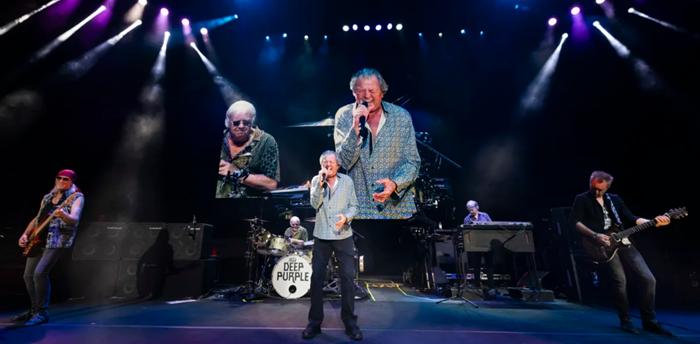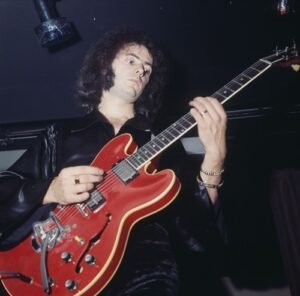
The term “Deep Purple fake farewell tour” has evolved into a significant talking point among rock fans and music industry analysts alike. Throughout its extensive career, Deep Purple has skillfully balanced the fine line between authentic farewell tours and calculated marketing strategies designed to boost ticket sales and generate buzz. This nuanced approach reached a new peak with their 2017 tour, which was branded as “The Long Goodbye.” Marketed as a potential final tour, this strategic move was more than just a farewell—it was a masterstroke in leveraging the allure of finality to drive audience interest and ticket sales.
While the name suggested a poignant end to the band’s touring history, it was, in essence, a clever marketing ploy to capitalize on the emotional appeal of a final farewell. The tour not only highlighted Deep Purple’s enduring popularity but also showcased their ability to play the marketing game effectively. The “Long Goodbye” tour thus became a classic example of how the band artfully combined genuine musical ambition with strategic marketing, reinforcing their iconic status in the rock world while keeping fans engaged and eager for more.
The Genesis of the Deep Purple Fake Farewell Tour
In 2017, Deep Purple announced their tour as the “Long Goodbye,” a name that implied a farewell to fans. However, this title has since been exposed as a Deep Purple fake farewell tour strategy designed to boost ticket sales. The band’s lead singer, Ian Gillan, recently admitted in an interview that the Deep Purple fake farewell tour was not intended to be a real goodbye. Instead, it was a marketing tactic suggested by promoters to create a sense of urgency and encourage fans to buy tickets.
The Truth Behind the Deep Purple Fake Farewell Tour
Ian Gillan’s revelation about the Deep Purple fake farewell tour provides clarity on the band’s approach to their so-called farewell. According to Gillan, the name “The Long Goodbye” was a deliberate ploy to make the tour sound like a final opportunity for fans to see the band. This Deep Purple fake farewell tour approach was meant to resonate emotionally with audiences, making them more likely to purchase tickets. The band’s actual intention was never to retire, as evidenced by their continued touring schedule.
Fans’ Reaction to the Deep Purple Fake Farewell Tour
The Deep Purple fake farewell tour has sparked a range of reactions from fans. While some were initially misled by the tour’s name, many others were delighted to see the band continue performing. The Deep Purple fake farewell tour strategy highlights how bands can use emotional marketing to their advantage. Fans who were drawn in by the notion of a final farewell were often more inclined to see the band live, only to find that the farewell was not genuine.
The Legacy of the Deep Purple Fake Farewell Tour
The Deep Purple fake farewell tour has become a notable case study in the intersection of marketing and music. By using the guise of a farewell tour, Deep Purple managed to create a buzz that translated into higher ticket sales. The band’s continued success and ongoing tours following the Deep Purple fake farewell tour demonstrate the effectiveness of this marketing strategy. Fans and industry observers alike will likely continue to discuss the impact of the Deep Purple fake farewell tour for years to come.
The Ongoing Impact of the Deep Purple Fake Farewell Tour
Despite the Deep Purple fake farewell tour being exposed, the band remains active and continues to perform. The legacy of the Deep Purple fake farewell tour serves as a reminder of how bands can leverage marketing techniques to create memorable experiences for fans. As Deep Purple continues to tour and release new music, the Deep Purple fake farewell tour will likely remain a significant part of their story.
Deep Purple Activity Chart
| Year | Event |
| 1968 | Deep Purple is founded in London. |
| 1969 | Rod Evans is replaced by Ian Gillan; Nick Simper is replaced by Roger Glover (Mark II lineup). |
| 1970 | Release of the iconic album In Rock. |
| 1971 | Release of Fireball. |
| 1972 | Release of Machine Head; “Smoke on the Water” becomes a major hit. |
| 1973 | Release of Who Do We Think We Are. |
| 1975 | Ritchie Blackmore leaves; Tommy Bolin joins for Come Taste the Band. |
| 1976 | Mark IV lineup disbands; Tommy Bolin passes away. |
| 1984 | Reunion of the Mark II lineup; release of Perfect Strangers. |
| 1993 | Release of The Battle Rages On; departure of Ritchie Blackmore. |
| 2002 | Steve Morse joins as guitarist, marking the start of the Mark VIII lineup. |
| 2006 | Release of Rapture of the Deep. |
| 2012 | Release of Now What?!. |
| 2017 | “The Long Goodbye” tour begins, marketed as a farewell tour. |
| 2022 | Simon McBride joins as the permanent guitarist, marking the start of the Mark IX lineup. |
| 2024 | Continued touring; upcoming shows in North America, South America, and Europe. |
Deep purple guitarist
Deep Purple’s guitarists have left an indelible mark on the band’s sound over the years. Ritchie Blackmore, the original axeman, is celebrated for his pioneering work in rock and heavy metal, shaping Deep Purple’s early, iconic sound. Steve Morse, who joined in 1994, brought a fresh perspective with his virtuosity and fusion influences, significantly impacting the band’s music during his tenure.
Tommy Bolin, who played with Deep Purple in the mid-1970s, is remembered for his eclectic style and brief but memorable contribution to the band’s discography. Most recently, Simon McBride has stepped in, continuing the legacy with his own distinct approach, blending seamlessly into the band’s evolving sound. Each guitarist has contributed uniquely to Deep Purple’s storied history, reflecting the band’s adaptability and enduring appeal.
Ritchie Blackmore

Ritchie Blackmore, born on April 14, 1945, is a seminal figure in rock music, renowned for his role as the founding lead guitarist of Deep Purple. Blackmore’s innovative guitar work, characterized by a fusion of hard rock riffs and classical influences, helped define the band’s iconic sound. After his initial tenure with Deep Purple, Blackmore formed Rainbow in 1975, merging hard rock with baroque elements, and later ventured into folk rock with Blackmore’s Night, showcasing his versatility and evolving musical interests.
His profound impact on rock guitar playing is widely recognized, with accolades from major publications and his induction into the Rock and Roll Hall of Fame in 2016. Blackmore’s career reflects a constant evolution, from hard-hitting rock to delicate folk melodies, solidifying his legacy as one of the most influential guitarists in music history.
Steve Morse

Steve J. Morse, born on July 28, 1954, is a renowned American guitarist known for his impressive versatility and influential career. As the founder of the Dixie Dregs, Morse initially gained recognition for his pioneering work in jazz fusion. His tenure with Deep Purple, where he served as the longest-serving guitarist from 1994 to 2022, marked a significant chapter in his career, contributing to the band’s evolution with his distinctive playing style.
Morse’s remarkable skill set extends beyond Deep Purple; he has also made notable contributions with his solo projects, the Steve Morse Band, and the supergroup Flying Colors. His technical prowess and creative approach to guitar playing have earned him accolades, including being voted “Best Overall Guitarist” by Guitar Player magazine for five consecutive years. Known for his signature Music Man guitars and ENGL amplifiers, Morse’s innovative techniques and diverse musical influences continue to inspire guitarists worldwide.
Simon McBride

Conclusion
The Deep Purple fake farewell tour exemplifies the ways in which bands use strategic naming and marketing to engage with their audience and drive ticket sales. The 2017 tour, branded as “The Long Goodbye,” was not intended to be a genuine farewell but rather a calculated marketing maneuver designed to spark interest and boost ticket sales. This clever yet controversial approach highlights how the Deep Purple fake farewell tour strategy played a pivotal role in maintaining the band’s visibility and success. By implying that this might be their final tour, Deep Purple generated a buzz that led to increased demand and a surge in ticket sales.
Despite the tour not being an actual farewell, it cleverly capitalized on the emotional appeal of a final tour, demonstrating how marketing strategies can manipulate perceptions and expectations. Whether viewed as a savvy business move or a misleading tactic, the Deep Purple fake farewell tour has become a significant and memorable chapter in the band’s illustrious history, showcasing their ability to blend artistry with astute promotional strategies. Go and make some story about your experience reading the content. Haha..








